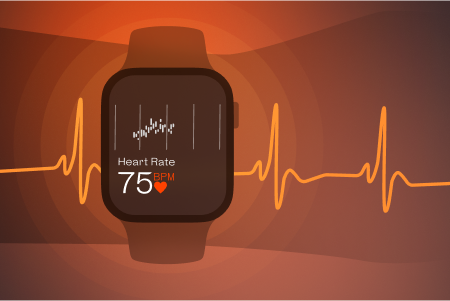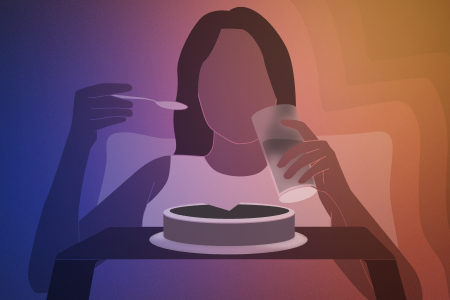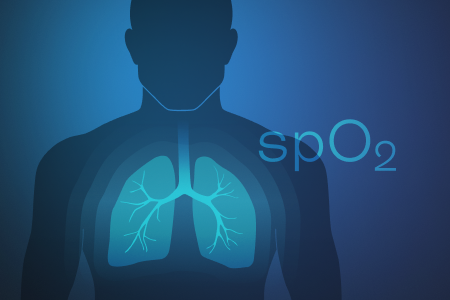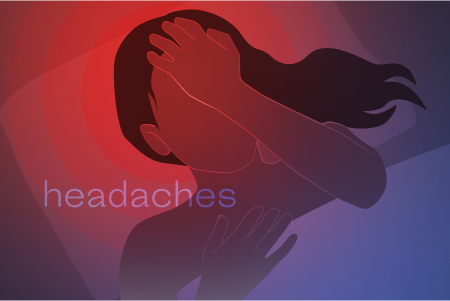
Measuring Resting Heart Rate
From manual pulse counts to the latest in app technology, dive into the transformative journey of heart rate monitoring

What are bad and good cholesterol? How do I keep my cholesterol levels in check, and why should I? What foods should I eat or avoid if I have high cholesterol?
Disclaimer: We rely on established medical research, but our articles and recommendations are not a substitute for a doctor’s visit. Any decisions about your health should be made by you and a medical professional.
When “bad” cholesterol levels are high and “good” cholesterol — low, cholesterol accumulates on your blood vessel walls, increasing the risk of stroke and heart attack. To address this, doctors can prescribe medications called statins. Reducing your intake of animal products and processed foods while eating lots of vegetables, fruits, and whole grains, will slightly reduce cholesterol levels. However, up to 80% of cholesterol is produced by your body, not absorbed from food, so even a healthier food plan can’t replace medicine in treating high cholesterol.
Your body needs cholesterol to maintain cell membrane integrity and synthesize hormones, vitamin D, and digestive bile acids. Most of your cholesterol is synthesized by the body, and only a fraction is absorbed from food.
Cholesterol isn’t water soluble, so to get around the body, it travels packaged in a large protein capsule called a lipoprotein. A lipoprotein contains hundreds of fat molecules (lipids) encased in a protein membrane.
Lipoproteins carry cholesterol from the liver to wherever it’s needed in the body and back. But how lipoproteins are packaged makes a difference in how they affect your health.
1. If the cholesterol molecules are packaged in the protein ApoB, this lipoprotein form is called low-density lipoprotein (LDL), and it is what we know as “bad” cholesterol. LDL is harmful because it easily deposits cholesterol molecules on artery walls.
2. If cholesterol is packaged in the ApoA1 protein, it becomes a high-density lipoprotein (HDL), the “good” cholesterol. This lipoprotein capsule actually removes cholesterol from artery walls and returns it to the liver where it’s processed..
If your body has too much LDL or too little HDL, cholesterol begins to accumulate in the arteries, raising the risk of developing cardiovascular disease. This happens for several reasons: arteries get narrower and less flexible, a condition known as atherosclerosis. Additionally, too much cholesterol in your artery walls triggers an inflammatory response that can create atherosclerotic plaque, inhibiting blood flow. The plaque can suddenly burst, causing a blood clot that can precipitate a stroke or heart attack.
Elevated cholesterol isn’t easy to identify unless you’re looking for it –– there are no warning signs until you develop atherosclerosis. Even full-blown atherosclerosis can go undetected for years; sometimes, the first indication of anything being wrong is a stroke or heart attack. Anyone can have high cholesterol –– even if you’re an otherwise healthy, active vegetarian.
You can test your cholesterol with a blood test called a lipidogram. Healthy adults without risk factors should have this test done every 5 years. If you have some risk factors, you should do the test more often. Risk factors include a family history of high cholesterol, diagnosed cardiovascular disease, diabetes, hypertension, and smoking.
It’s important to measure not just the overalll level of cholesterol in the blood, but to identify their individual levels. For a healthy adult, a concerning level for LDL would be >3.1 mmol/L and for HDL <1.1 mmol/L. For people with heart disease, optimal LDL levels should be even lower. Unfortunately, if your HDL levels are too high, it stops being the “good” cholesterol: research has linked high HDL levels to higher risks of heart attack, death from cardiovascular disease, and premature death.
You should also test for a lipoprotein known as Lipoprotein(a). High Lipoprotein(a) levels increase the risk for cardiovascular disease independently of other lipoproteins. There is no single best way to lower Lipoprotein(a) levels, but it’s best to know about it so you can make more informed decisions about your health.
Dietary cholesterol is found in food with a lot of animal fats. In and of itself, cholesterol in food has almost no effect on blood cholesterol levels. What’s more important is what kind of fats you usually eat.
Trans fats elevate LDL levels, lower HDL levels, and are unequivocally bad for you. You can find trans fats in industrially processed foods, such as fast food, sausages, semi-prepared food, some flavoring agents, whipped cream, and others. You can identify trans fats on nutrition labels by looking for hydrogenated or partially hydrogenated fat, margarine, culinary fat, combined fat, vegetable oil, vegetable butter, vegetable spread, or fried fat.
Saturated fat increases LDL levels. While some saturared fat is okay, consuming large amounts of saturated fat increases your risk of developing heart disease. It’s found in animal products like meat, eggs, and milk, as well as in some vegetable-based fats like coconut oil, palm oil, and cocoa butter.
Unsaturated fat reduces bad cholesterol levels and increases good cholesterol, making it a healthy food choice. It’s found in fatty fish and plant-based foods, like nuts, seeds, and beans, as well as avocado and olive oil. But be careful: some plant oils, like coconut oil, contain saturated fat. The difference is easy to spot — unsaturated fats are liquid at room temperature.
To keep your cardiovascular system healthy, reduce saturated fat intake to under 10% of your total caloric intake. 5-6% is even better, which is roughly 13g for a daily intake of 2000 calories. The majority of fat in your food should be unsaturated, and a small amount of saturated fat is okay, but trans fats should be avoided altogether.
Here are some specific food recommendations from the American Cardiological Association(ACA). Limit your intake of:
Processed foods. These foods contain a lot of trans fats, which is why it’s good to avoid fast food and store-bought pastries, ham, sausage, semi-finished food, and prepackaged food.
Red meat. Contains a lot of saturated fat, which elevates LDL levels. Eating red meat is linked to elevated risks of cardiovascular disease, so limit your intake.
Fast-acting carbohydrates. Frosting, juice, white bread, refined rice, desserts, and pastries are all foods with a high glycemic index. Research has linked these foods to higher levels of LDL and a higher risk of cardiovascular disease.
It’s also worth reducing your consumption of:
Dairy products. They’re a source of saturated fat, which is why the ACA recommends reduced or non-fat products. Australia’s Heart Foundation doesn’t draw such a hard line: their recommendation is to consume fat-free and sugar-free milk, yogurt, or cheese only if you already have heart disease or high cholesterol. However, they agree that butter, cream, and ice cream should be avoided.
Eggs. Whether or not you should eat eggs depends on whether you already have cardiovascular disease or other risk factors. If you already have high cholesterol, you should eat less than an egg a day (for example, two eggs every three days or less). If your cholesterol is at normal levels, one egg a day is fine.
Tropical oils. Oils such as coconut or palm oil, as well as cocoa butter, contain a lot of saturated fat. They shouldn’t be consumed in large quantities, especially if you already have high cholesterol.
Try adding more of the following foods:
Vegetables, fruits, and berries. Research has shown that plant fiber lowers cholesterol, blood pressure, and inflammation, while antioxidants neutralize oxidative stress. The optimal amount is 5-10 servings (80g is one serving) daily.
Whole grains. They contain a lot of fiber, just like vegetables. Their fiber is in the outer membrane of the seed, so it’s important to select foods that are maximally close to the original grain, avoiding processed products. The outer membrane is often sifted out when grains are processed into flour. For example, it’s better to eat brown rice or buckwheat groats instead of refined white rice. The daily recommended intake is 400-800g.
Nuts, seeds, fish, and olive oil. Replace saturated fats with HDL-increasing unsaturated fats, to protect your heart and blood vessels. Look for foods that contain omega-3, omega-6, and omega-9 fatty acids, which are particularly good for you. These foods include flax, chia, and sunflower seeds, as well as salmon, walnuts, Chinese cabbage, sesame, poppy, soy, corn, olive oil, and spinach.
In addition to tweaking your nutrition plan, make sure you’re getting enough exercise. Physical activity can lower LDL and increase HDL levels while keeping your blood vessels from hardening. Quitting smoking would also have a big impact. Smoking damages and hardens artery walls, laying the groundwork for atherosclerosis. Kicking your tobacco habit will improve your lipid profile: research has shown that your HDL levels will improve just a few weeks after quitting.
Healthy eating can partially lower your cholesterol levels, but it can’t replace medication if your cholesterol is already high. This is usually the point at which doctors will prescribe statins, such as rosuvastatin and atorvastatin. These medications reduce the production of cholesterol in the liver, reduce blood cholesterol levels, and have anti-inflammatory properties that help the risk of heart disease. Their effectiveness has been proved through research.
It’s important to note that statins need to be taken continuously to keep cholesterol levels low, often for the rest of your life. Thankfully they’ve been found to be harmless and rarely have side effects. Contrary to some popular myths, stopping taking statin does not lead to a medical crisis – but your cholesterol will return to its previous levels, along with any risks of cardiovascular disease.
Another treatment for cholesterol is PCSK9 inhibitors, such as Evolocumab. They reduce cholesterol levels in a different way, by letting the liver release more receptors that retrieve LDL capsules out of the bloodstream. PCSK9 inhibitors lower not only LDL levels but also Lipoprotein(a) levels. However, for now, PCSK9 inhibitors are much more expensive – they cost more than 20 times more than statins.
Welltory Team, 23 Dec. 2022

From manual pulse counts to the latest in app technology, dive into the transformative journey of heart rate monitoring

Discover the intricate relationship between late-night eating and its impact on sleep duration and quality

From boosting cognitive function to enhancing physical performance, discover the impact of blood oxygen levels on various aspects of health

The relationship between stress and productivity and how Welltory can help you plan better

Does sleeping burn any calories, should you exercise right before bed and how much do you need to sleep to burn a 1000 Cal

All you needed to know about headaches at night – types of nighttime headaches, their causes, possible treatment and how to avoid them.
 App Store
App Store
 Google Play
Google Play
 Huawei AppGallery
Huawei AppGallery
 Galaxy Store
Galaxy Store







